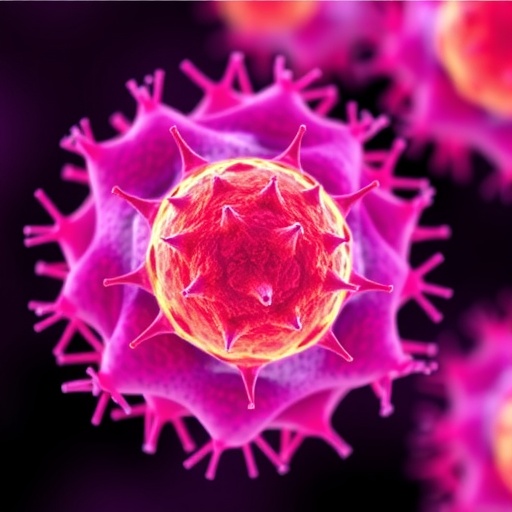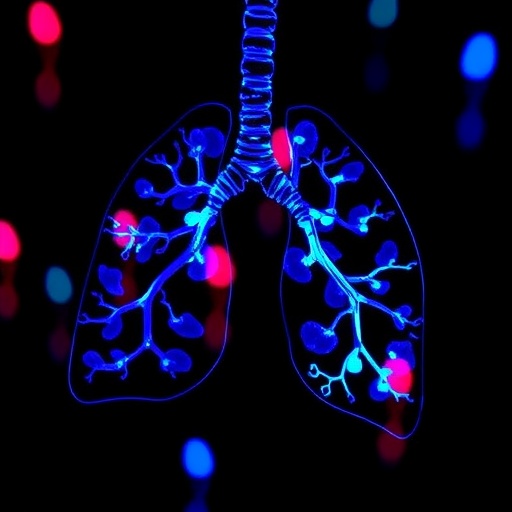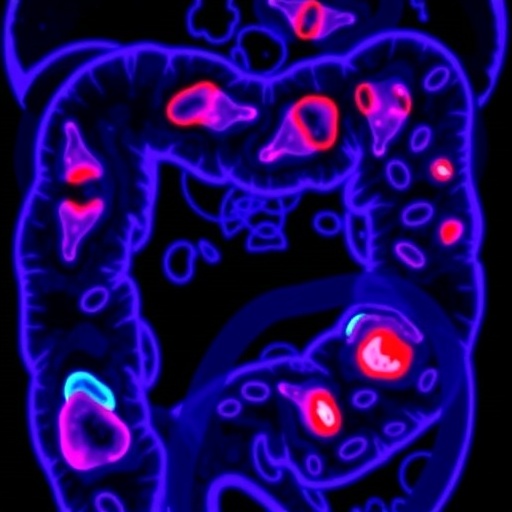In the latest advances of targeted cancer therapy, a groundbreaking approach has emerged, promising to revolutionize the treatment landscape for breast cancer patients worldwide. Scientists have engineered an innovative delivery system designed to exquisitely target cancer cells while sparing healthy tissues, thus minimizing adverse effects and enhancing therapeutic efficacy. This state-of-the-art method utilizes neuropeptide Y (NPY)-functionalized niosomes as nanocarriers for margatoxin, a potent peptide known for its ion channel blocking properties, offering unprecedented precision in combating breast cancer.
Breast cancer remains one of the most prevalent and deadly malignancies, affecting millions globally each year. Current treatment modalities, including surgery, chemotherapy, radiation, and hormonal therapy, while effective to varying degrees, often suffer from systemic toxicity, poor specificity, and the inevitable development of resistance. Researchers have long sought molecularly targeted strategies that could deliver therapeutic agents directly to malignant cells, minimizing collateral damage to normal tissues. The advent of nanotechnology has opened new possibilities, enabling the design of sophisticated nanoscale drug delivery vehicles that navigate biological barriers and hone in on tumor microenvironments.
Niosomes, non-ionic surfactant-based vesicles structurally similar to liposomes but with enhanced stability and lower production costs, have garnered considerable interest as drug delivery platforms. Their unique ability to encapsulate both hydrophilic and hydrophobic agents, coupled with favorable biocompatibility, make them ideal candidates for targeted cancer therapeutics. However, passive targeting via the enhanced permeability and retention (EPR) effect alone is often insufficient for robust therapeutic outcomes. To overcome this limitation, surface modification of niosomes with ligands such as peptides, antibodies, or aptamers capable of recognizing and binding to tumor-associated receptors is crucial.
In this innovative study, researchers have functionalized niosomes with neuropeptide Y, a 36-amino acid peptide highly expressed in various tissues and involved in multiple physiological processes, including appetite regulation and vascular function. Importantly, receptors for NPY, particularly the Y1 receptor subtype, are overexpressed in certain breast cancer subtypes, providing a selective molecular target for therapeutic intervention. By decorating the niosome surface with NPY, the nanocarriers actively home to breast cancer cells expressing Y1 receptors, facilitating receptor-mediated endocytosis and intracellular delivery of the drug payload.
The therapeutic agent encapsulated within these NPY-functionalized niosomes is margatoxin, a peptide originally isolated from scorpion venom, known for its exquisite potency as a Kv1.3 potassium channel blocker. Ion channels like Kv1.3 are increasingly recognized as key players in cancer cell proliferation, migration, and apoptosis. In breast cancer cells, aberrant Kv1.3 activity supports tumor growth and metastatic potential. By selectively delivering margatoxin to cancer cells, this system effectively hampers critical cellular processes, leading to tumor regression.
Elaborate physicochemical characterization revealed that the NPY-decorated niosomes exhibit optimal size distribution and stability conducive for systemic administration. Their favorable surface charge and morphological integrity ensure prolonged circulation and enhanced tumor accumulation. In vitro studies demonstrated significant uptake of these functionalized niosomes by breast cancer cells overexpressing the Y1 receptor, corroborating the specificity of targeting. Moreover, the encapsulated margatoxin exerted potent cytotoxic effects selectively against malignant cells, sparing non-cancerous counterparts.
Moving beyond cell culture, in vivo experiments in breast cancer xenograft models underscored the therapeutic potential of this approach. Systemic administration of NPY-functionalized niosomes loaded with margatoxin resulted in marked tumor size reduction compared to controls receiving free drug or non-targeted carriers. Additionally, treated animals showed minimal off-target toxicity, highlighting the biocompatibility and safety profile of the delivery system. Histopathological analyses confirmed the induction of apoptosis and attenuation of proliferative markers within tumor tissues, aligning with the proposed mechanism of action.
This targeted nanotherapy approach addresses several hurdles that have historically impeded the clinical translation of peptide-based drugs. Margatoxin’s potent biological activity, while desirable, is hampered by its susceptibility to enzymatic degradation and poor bioavailability when administered conventionally. Encapsulation within niosomes not only shields margatoxin from premature metabolism but also facilitates controlled release, ensuring sustained therapeutic levels at the tumor site. Combining this with NPY-mediated active targeting significantly enhances efficacy while reducing systemic exposure.
The implications of these findings extend well beyond breast cancer. The modularity of the niosomal platform permits facile substitution of targeting ligands and therapeutic agents, rendering it highly adaptable for various oncological and non-oncological diseases. Integration of such targeted nanomedicine strategies with existing treatment regimens holds immense promise in achieving synergistic effects, overcoming resistance, and improving patient outcomes. Furthermore, the scalability and cost-effectiveness of niosome production accentuate the translational value of this technology.
Despite the encouraging results, certain challenges remain before clinical application becomes a reality. Comprehensive toxicological profiling, detailed pharmacokinetic studies, and assessment of immunogenicity are essential to ensure patient safety. Optimizing dosing regimens and exploring combination therapies could further potentiate the therapeutic efficacy of this system. Additionally, variability in receptor expression among patient populations calls for personalized diagnostic tools to identify candidates most likely to benefit from NPY-targeted therapy.
The intersection of nanotechnology, peptide biology, and oncology encapsulated in this innovative research highlights the future direction of precision medicine. By marrying the specificity of ligand-receptor interactions with the versatility of nanocarrier design, this work exemplifies how molecular insights can be harnessed to construct next-generation therapies. The introduction of NPY-functionalized niosomes for margatoxin delivery establishes a new paradigm in breast cancer treatment, balancing potency with precision and elegance.
As the burden of breast cancer continues to rise globally, such pioneering methodologies offer a beacon of hope. They embody a move away from conventional, often indiscriminate cytotoxic treatments toward nuanced interventions tailored to the molecular landscape of individual tumors. Continued interdisciplinary collaboration between chemists, biologists, clinicians, and engineers will be vital in driving these promising innovations from bench to bedside, ultimately transforming patient care.
Future research avenues may explore the incorporation of imaging agents within the niosomal structure for theranostic applications, enabling real-time monitoring of drug delivery and therapeutic response. Additionally, engineering stimuli-responsive release mechanisms could further enhance cargo delivery precision, activating drug release only within the tumor microenvironment. Such sophisticated control would not only maximize therapeutic index but also mitigate unforeseen side effects, elevating patient quality of life.
Equally important is the investigation of the immune-modulatory effects of the margatoxin-loaded NPY-niosomes, as recent studies have elucidated the complex interplay between ion channels and tumor immunity. Harnessing these interactions could synergistically augment antitumor immunity, potentially transforming “cold” tumors into “hot” ones more amenable to immunotherapies. The integration of targeted nanomedicine with immune checkpoint inhibitors or adoptive cell therapies stands as an exciting frontier.
The elegant design of NPY-functionalized niosomes for targeted delivery serves as a testament to the power of biomimicry and rational engineering in developing effective cancer treatments. By exploiting natural ligands such as neuropeptide Y and potent biologically active peptides like margatoxin, researchers have crafted a sophisticated weapon against breast cancer that optimizes specificity and efficacy. This breakthrough exemplifies how fundamental biological principles can inspire transformative therapeutic solutions in the fight against cancer.
In conclusion, the targeted delivery of margatoxin via NPY-functionalized niosomes heralds a novel and highly promising avenue in breast cancer therapy. This multifaceted nanoplatform combines the advantages of peptide ligands, venom-derived therapeutics, and nanocarriers to achieve selective cytotoxicity, improved drug stability, and reduced side effects. As the field of nanomedicine continues its rapid ascent, such innovative strategies will likely play a pivotal role in redefining cancer treatment paradigms, ultimately saving lives and improving patient prognosis.
Subject of Research: Targeted nanocarrier systems for breast cancer therapy utilizing NPY-functionalized niosomes to deliver margatoxin.
Article Title: NPY-functionalized niosomes for targeted delivery of margatoxin in breast cancer therapy.
Article References:
Eftekhari, Z., Chiani, M. & Kazemi-Lomedasht, F. NPY-functionalized niosomes for targeted delivery of margatoxin in breast cancer therapy.
Med Oncol 42, 465 (2025). https://doi.org/10.1007/s12032-025-03026-3
Tags: breast cancer treatment innovationsinnovative drug delivery systemsmargatoxin delivery for breast cancerminimizing cancer treatment side effectsnanocarriers for cancer treatmentnanotechnology in cancer therapyneuropeptide Y in drug deliveryniosomes as drug delivery vehiclesNPY-targeted niosomespeptide-based cancer therapiesprecision medicine in oncologytargeted cancer therapy advancements





